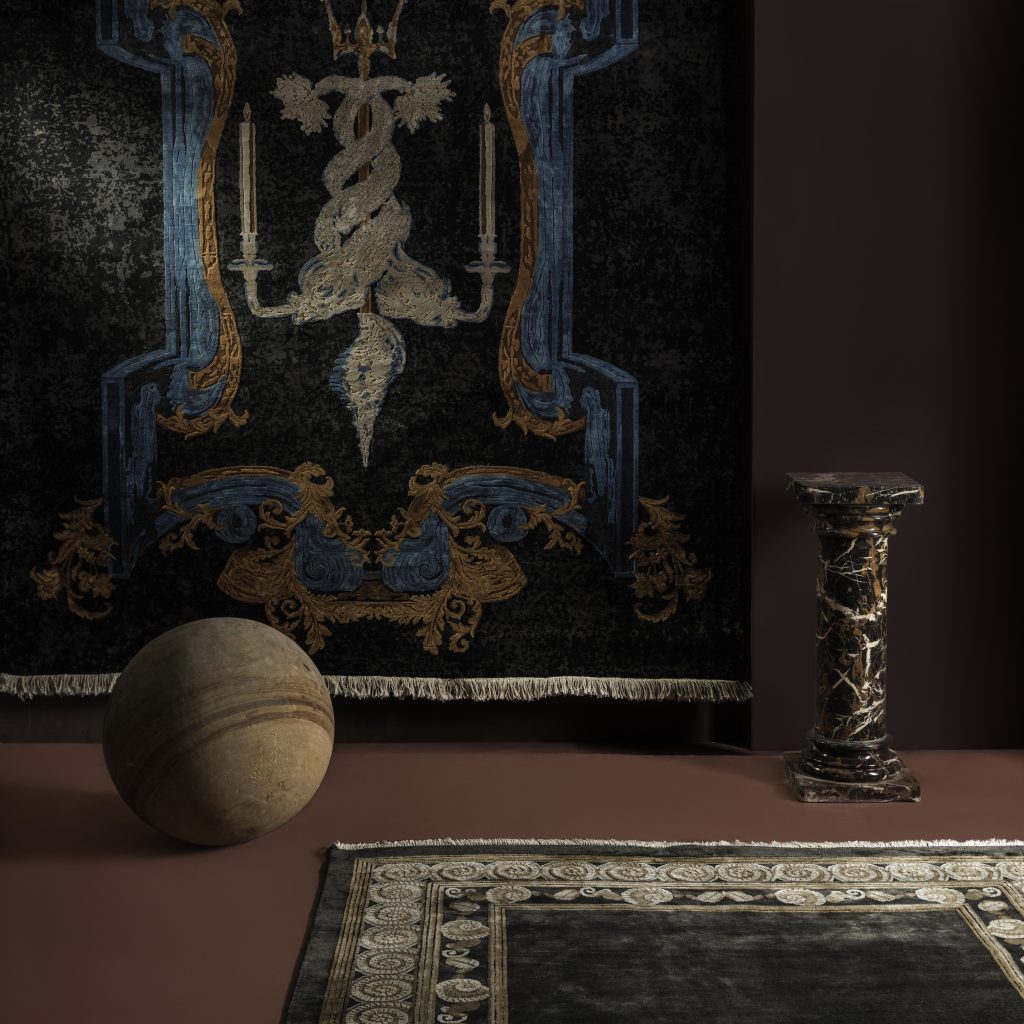Jaipur Rugs, has collaborated with one of Britain’s most distinguished silversmiths and jewellery artists, the late Jocelyn Burton, to create a collection of limited-edition rugs inspired by some of her most exquisite pieces.
The Jaipur Rugs X Jocelyn Burton collection is crafted from 100% pure silk by more than 30 artisans using traditional techniques passed down through generations, across two workshops in India. Each rug involves 90 people in different stages of weaving, dyeing and finishing.
The collection features 11 striking designs, with a limited run of only 10 pieces each. Jaipur Rugs and Jocelyn Burton chose the Tibetan and Persian construction techniques to suit each of the designs, applying different weaves to confer a distinct range of textures and tactility. A single rug can take up to 180 days to produce, making them a true labour of love and a testament to the skill and dedication of the artisans who created them.
Jocelyn first travelled to India in 1990 and quickly became enamoured with the colour and sophistication of the architecture in Delhi and Jaipur and the quality of the craftsmanship on display at every turn. Developing a profound attachment to the country and its culture, she regularly visited until she passed away in 2020.
Ken Mannering, Managing Director at Jocelyn Burton Studio, explains how the collaboration between Jaipur Rugs and Jocelyn took form: “Having done some prominent work with an esteemed stone inlay atelier based in Jaipur, Jocelyn was introduced to Jaipur Rugs in 2018 through a mutual friend, and soon the idea was born of using Jocelyn’s jewellery and silverware designs as the basis of a collection of handmade rugs.”
Yogesh Chaudhary, second-generation head of family-owned-and-managed Jaipur Rugs, comments: “Jocelyn’s life ethos, guided by the Buddhist principles of fairness and kindness, very much resonated with our own beliefs, and her fascination with peerless craftsmanship found a natural receptacle in the ancestral art of rug making. The whole collaboration fell into place very organically, and I am so grateful to Jocelyn’s heartfelt commitment to the collection, from creating the original drawings for the rugs to making design comments right up to the week before she passed away.”
Jaipur Rugs X Jocelyn Burton collection
Lirio’s delicate floral pattern is based on Jocelyn’s original painting made when producing a two-metre long tulip centrepiece in Sterling silver and fine enamels, commissioned by the Chelsea Arts Club in London.
Ammonodia take cues from Jocelyn’s fondness for the sea and its most intriguing creatures. The corner designs depict an ammonite fossil shell from the Jurassic period, which became Jocelyn’s favourite shell design and is still used by her studio as its corporate letterhead.
Tessel’s intricate design, which originated as an inlaid stone tabletop, boasts an exuberant wreath motif adorned with an effusion of botanical elements.
Belomancy evokes an extract from a quiver of alabaster arrows featuring in one of Jocelyn’s iconic lit sconces.
Neptune draws from the notable Fishmongers Wall Sconce, a piece commissioned by Lord Inchcape to commemorate his father, a former Prime Warden of the Worshipful Company of Fishmongers, and which now sits in the Fishmongers Hall on London Bridge.
Crystallum’s design emanates from a wall sconce made in gold, lapis and cast glass.
Secretum and Arborium were inspired by manifold coral shapes from Jocelyn’s found collection, which she gathered in the course of her travels around the world and fondly called her ‘Cabinet of Curiosities’.
Tapestry is a perfect replica in silk of a design Jocelyn had originally conceived for an inlaid stone table.
Porcella displays Jocelyn’s ammonite shell motif found in much of her work.
“Jocelyn Burton is one of life’s originals, an explosive, opinionated, bubbling being, all of which is amply reflected in her work. Everything is very exact and technically perfect. Her drawings for commissions rank as works of art in their own right. In all of this she stands at the end of a centuries old tradition; she is fully conversant with so many of the
skills once taken for granted but which are now in danger of being lost. She also works firmly within what one might describe as the classical tradition. If that evokes in some people’s minds objects which are dull and conventional you could not be wider of the mark. There’s always a twist and a madness to her work which makes it belong very much to the present. In her work the past is reborn in a form that could only ever belong to the twenty-first century.” ~ Sir Roy Strong, former Director of the Victoria & Albert Museum London.





